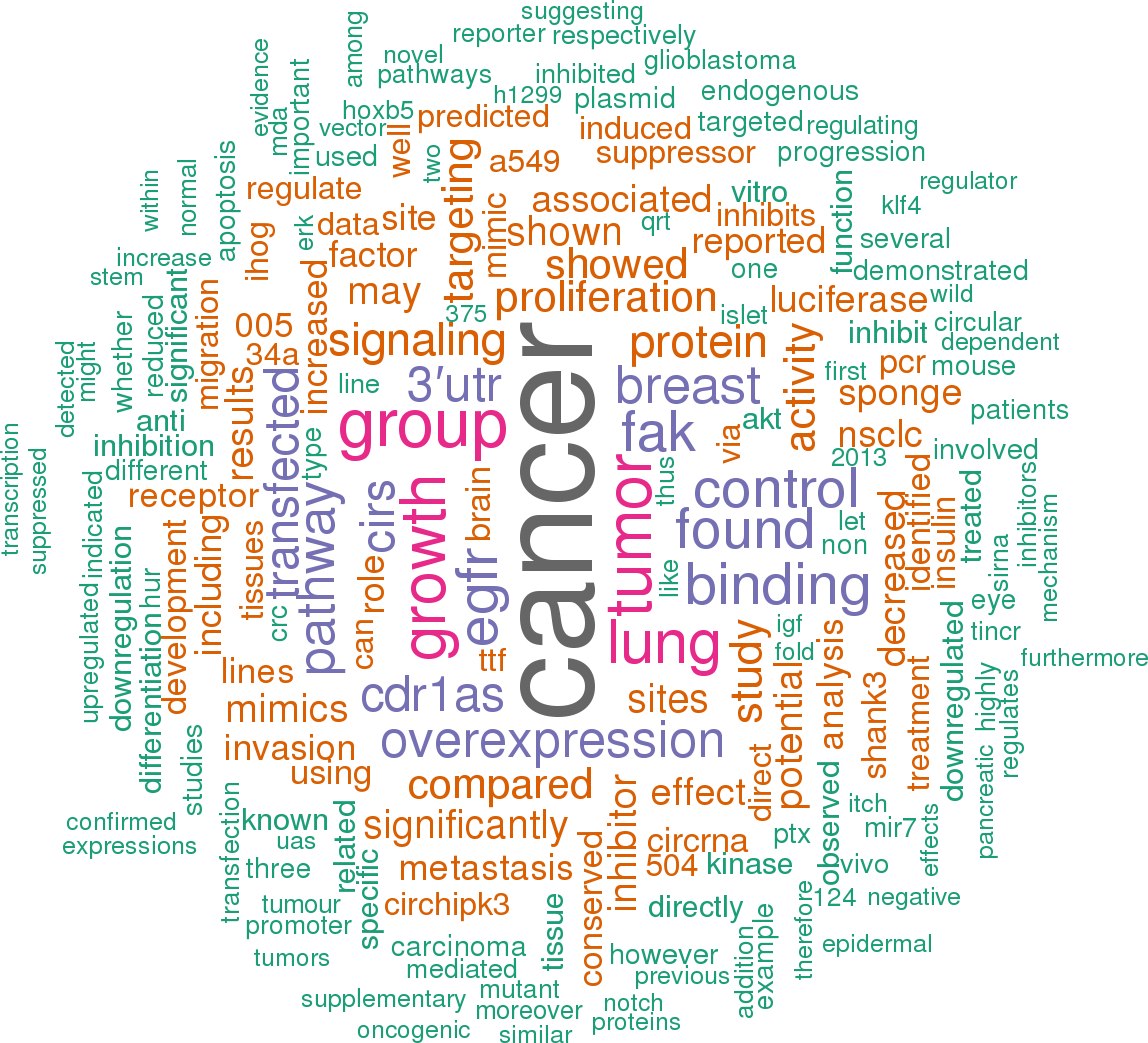Accession
MI0000264
Symbol
HGNC:
MIR7-2
Description
Homo sapiens
hsa-mir-7-2 precursor miRNA
Summary
Caution, this is an AI generated summary based on literature. This may have errors. ?
MIR7-2 is a microRNA gene implicated in the regulation of lipid metabolism in the liver, specifically through its interaction with peroxisome proliferator-activated receptor (PPAR) [PMC6591351]. It is one of the fifteen microRNA candidate genes identified, and like its human counterparts MIR7-1 and MIR7-3, it contributes to the production of mature miR-7 [PMC6479198]. The gene is located in an intergenic region on chromosome 15 [PMC8004586], and its expression is regulated by PPAR-α, as evidenced by qRT-PCR analysis [PMC5762714]. Additionally, transcription factors such as Forkhead box P3 (FOXP3) and Hepatocyte Nuclear Factor 4 alpha (HNF4α) have been shown to positively regulate miR-7 expression by binding to MIR7 promoter regions [PMC4600152]'>PMC4600152], with RELA also identified as a direct binding factor to MIR7 promoter regions [PMC4600152]. The transcriptional regulation of miR-7 involves separate loci for each gene encoding it—MIR7-1 on chromosome 9q21, MIR7-2 on chromosome 15q26, and MIR7-3 on chromosome 19q13—highlighting the complexity of its regulatory mechanisms [PMC7918072].
Literature search

341 open access papers mention hsa-mir-7-2
(2076 sentences)
(2076 sentences)
Sequence
926760
reads,
2873
reads per million, 159 experiments
cuggauacagaguggaccggcuggccccaucUGGAAGACUAGUGAUUUUGUUGUUgucuuacugcgcucaaCAACAAAUCCCAGUCUACCUAAuggugccagccaucgca
(((....))).((((...(((((((.((((..((.(((((.(.(((((.(((((((............))))))))))))).))))).))..)))).))))))).)))).
(((....))).((((...(((((((.((((..((.(((((.(.(((((.(((((((............))))))))))))).))))).))..)))).))))))).)))).
Structure
cuggauacaga acc c cU A A U U ucuua
gugg ggcuggc ccau GG AGACU G GAUUU GUUGUUg c
|||| ||||||| |||| || ||||| | ||||| |||||||
cgcu ccgaccg gguA CC UCUGA C CUAAA CAACaac u
----------a --a u AU A C - - ucgcg
Annotation confidence
High
Do you think this miRNA is real?
Comments
This human miRNA was predicted by computational methods using conservation with mouse and Fugu rubripes sequences [1]. Expression of the excised miR has been validated in zebrafish, and the 5' end mapped by PCR. Landgraf et al. confirm expression in human [2]. The mature sequence shown here represents the most commonly cloned form from large-scale cloning studies [2].
Genome context
chr15: 88611825-88611934 [+]
Clustered miRNAs
2 other miRNAs are < 10 kb from hsa-mir-7-2
| Name | Accession | Chromosome | Start | End | Strand | Confidence |
|---|
Disease association
hsa-mir-7-2 is associated with one or more human diseases in the Human microRNA Disease Database
| Disease | Description | Category | PubMed ID |
|---|
Mature hsa-miR-7-5p
| Accession | MIMAT0000252 |
| Description | Homo sapiens hsa-miR-7-5p mature miRNA |
| Sequence | 32 - UGGAAGACUAGUGAUUUUGUUGUU - 55 |
| Evidence |
experimental
cloned [2-3] |
| Database links |



|
| Predicted targets |



|
Mature hsa-miR-7-2-3p
| Accession | MIMAT0004554 |
| Description | Homo sapiens hsa-miR-7-2-3p mature miRNA |
| Sequence | 72 - CAACAAAUCCCAGUCUACCUAA - 93 |
| Evidence |
experimental
cloned [2] |
| Database links |



|
| Predicted targets |



|
References
|




